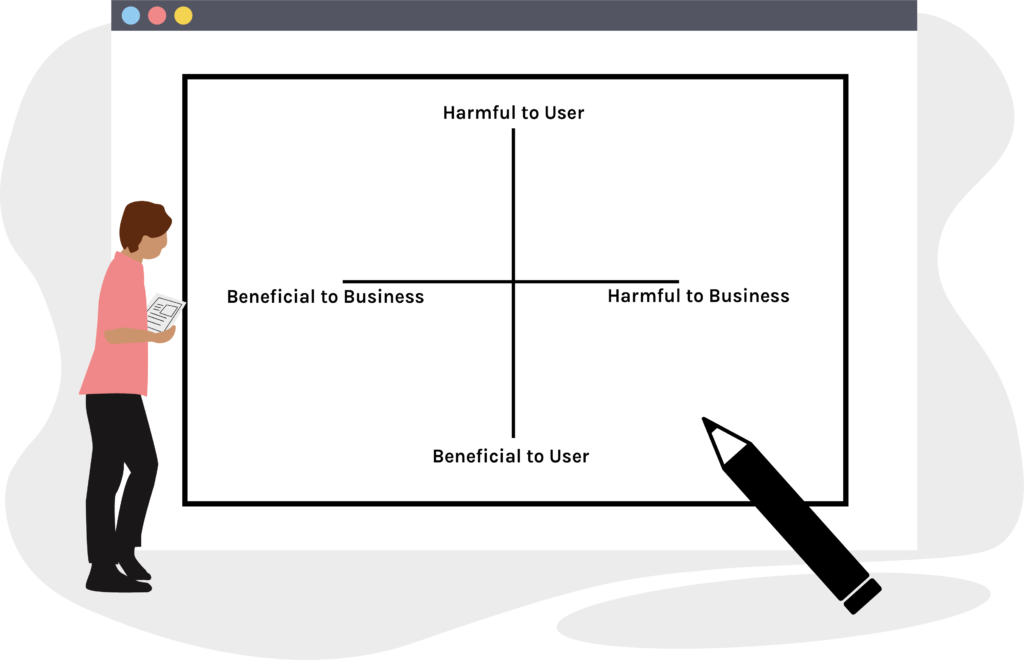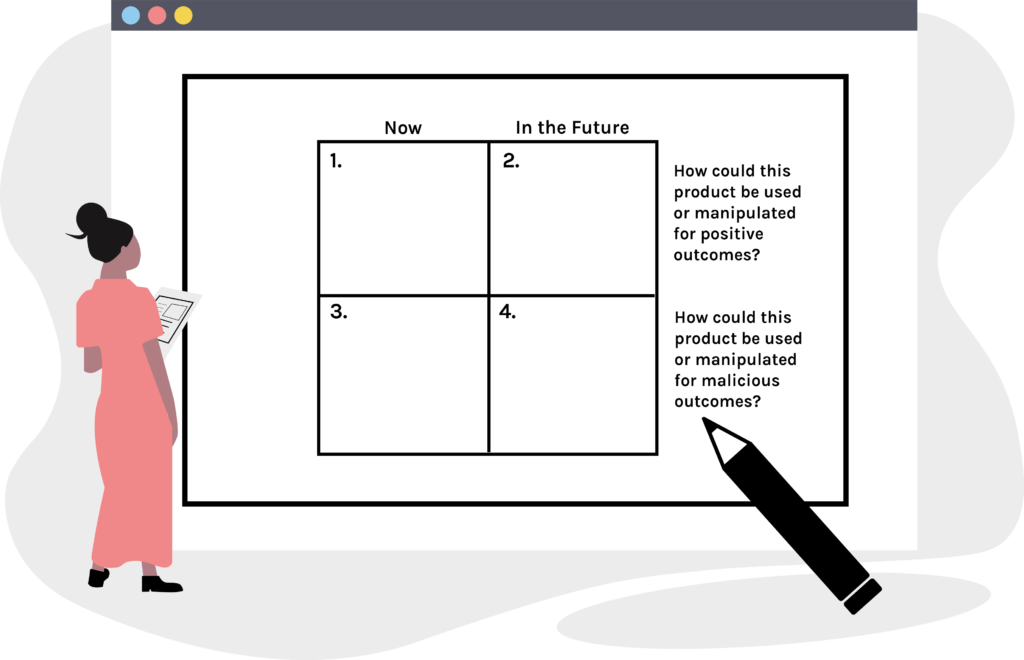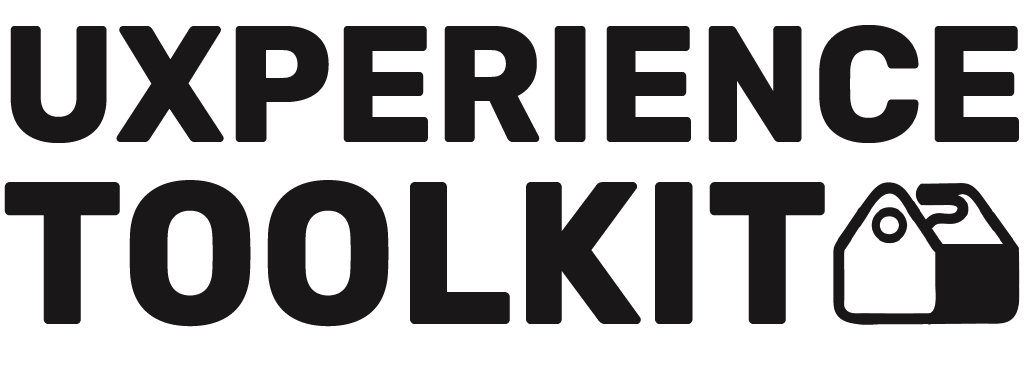Ethics
Featured method
Developed by Mariesa K Dale as a beta method, Yin-Yang aims to bring awareness to the design team and thoughts of possible outcomes of the product, which you may not have reflected upon in the beginning.
Ideate
Where do I start?
The focus of a UX-designer revolves around the human experience. We are putting ourselves in other people’s shoes in order to create something that is useful to them. At the same time, make our customers happy. There might not be that much focus on the aftermath of our creation. How will it affect people and their close environment? Or even globally? Therefore, it is important to involve ethical thinking in every aspect of the design process. You and your team should aim to question the morality of what you are creating and the possible outcomes of your design from the empathy stage to after the product is launched. As UX-designer Hila Yonatan writes in her article “Ethics in User Experience Design”:
“Why should we care at all? Well, if we are the ones who plan the processes and make the decisions, these are topics that ought to be addressed from a professional standpoint. No one would like to be labelled as the creator of an app that makes its users feel uncomfortable to interact with.“
Introducing ind.ie's Manifesto
Respect
Delightful
Functional, convenient & reliable
Decentralised, private, open, interoperable, accessible, secure & sustainable
Ethical design methods


Resources
Ethics for Designers
Ethics for Design
< DESIGN ETHICALLY >
Katherine M. Zhou has developed a ethical toolkit including methods to include in your process. In her own words “It is time for designers to pave the way for ethical decision-making in tech.
